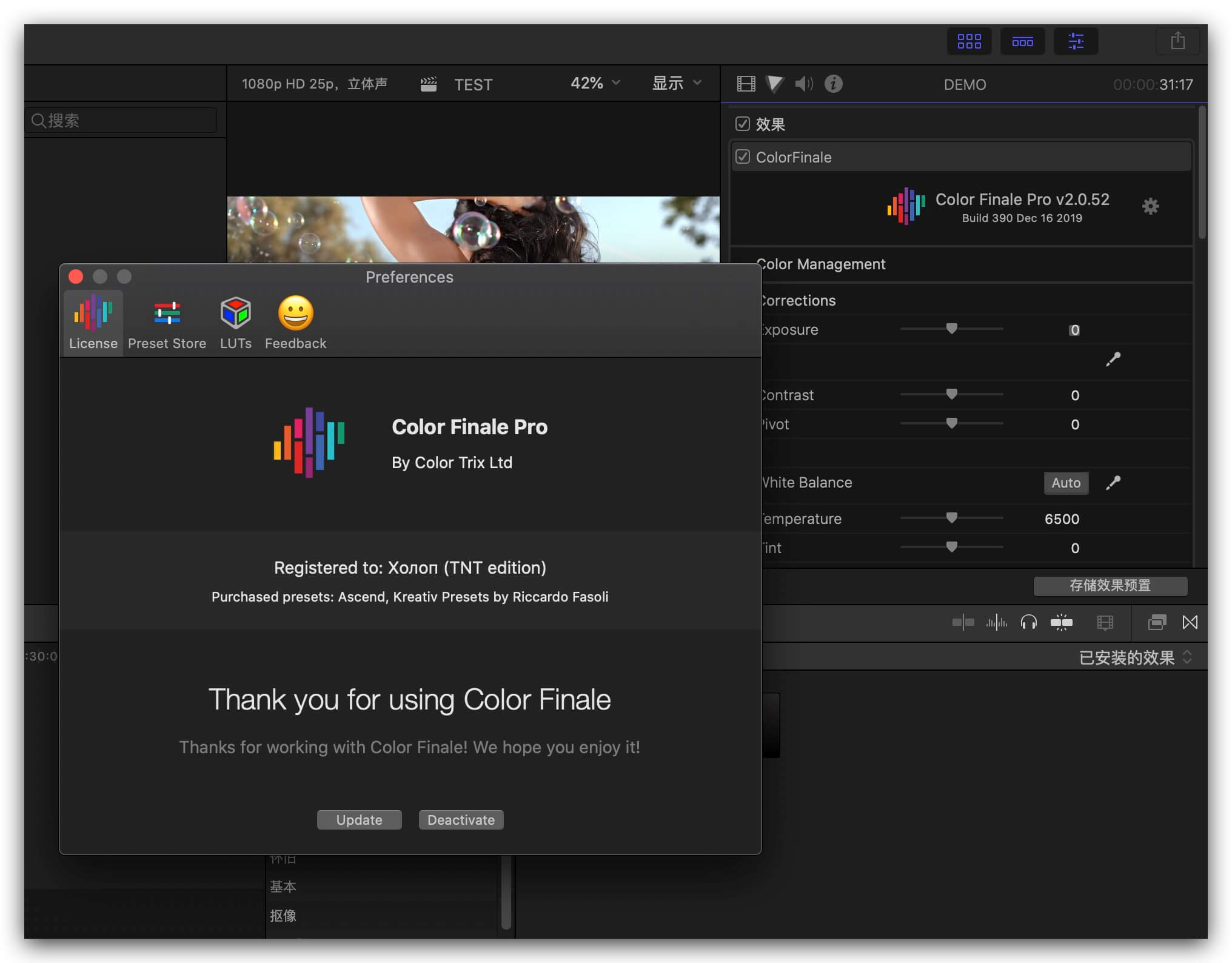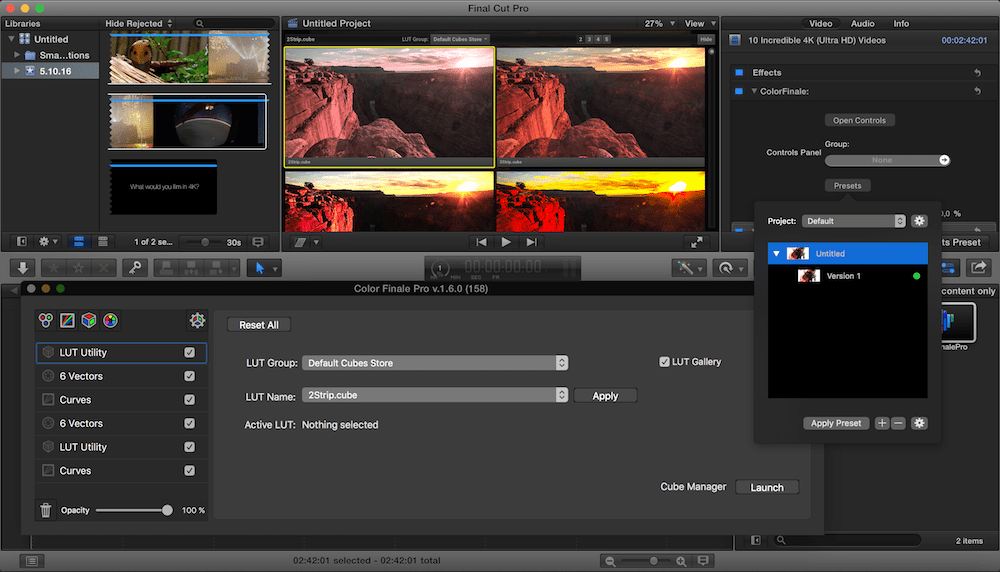

Finally, a suitable title is provided in the TITLE statement. The INSET statement writes the individual group AUC (area under the ROC curve) values inside the plot area.

#COLOR FINALE PRO 1.9.4 SERIES#
The LINEPARM statement draws the diagonal line and the SERIES statement specifies the variables to plot and the variable identifying the groups.

Also specified is an option to produce a set of grid lines and a small offset, within the plot area, above and below the range. The desired axis labels and tick points are specified in the XAXIS and YAXIS statements. In PROC SGPLOT, the ASPECT=1 option requests a square plot which is customary for an ROC plot in which both axes use the range. The PLOTS= option in the above PROC LOGISTIC statements produces the following ROC plots for the two groups. Proc logistic data=flydata plots(only)=roc Input block entry lat lng n r block<=2 then Group=1
#COLOR FINALE PRO 1.9.4 CODE#
In the code below, that name is used to save the graph data in data set ROCdata using the ODS OUTPUT statement. There, you find that the name of the ROC graph is ROCCurve. The name of the ROC graph produced by PROC LOGISTIC can be found in "ODS Graphics" in the Details section of the PROC LOGISTIC documentation. If a statistical comparison of the areas under the ROC curves is desired, see the testing method discussed and illustrated in this note. You also want to specify the plot title and different axis labels than are used by PROC LOGISTIC. However, you want a single plot showing both ROC curves. In this example, BY group processing is used in PROC LOGISTIC to fit a model to two groups of data which produces two separate ROC plots. The following shows the most common modification method which saves the data for the graph and then produces the plot as desired using PROC SGPLOT. Most modifications to the appearance of the produced plot must be made using one of the general methods for altering ODS graphs discussed in this note. Limited aspects of the ROC plot can be specified by options in the ROCOPTIONS= option in the PROC LOGISTIC statement. A plot of the ROC curve for the fitted model can be produced by either the PLOTS=ROC option in the PROC LOGISTIC statement, or the ROC statement, or by the OUTROC= option in the MODEL statement.


 0 kommentar(er)
0 kommentar(er)
